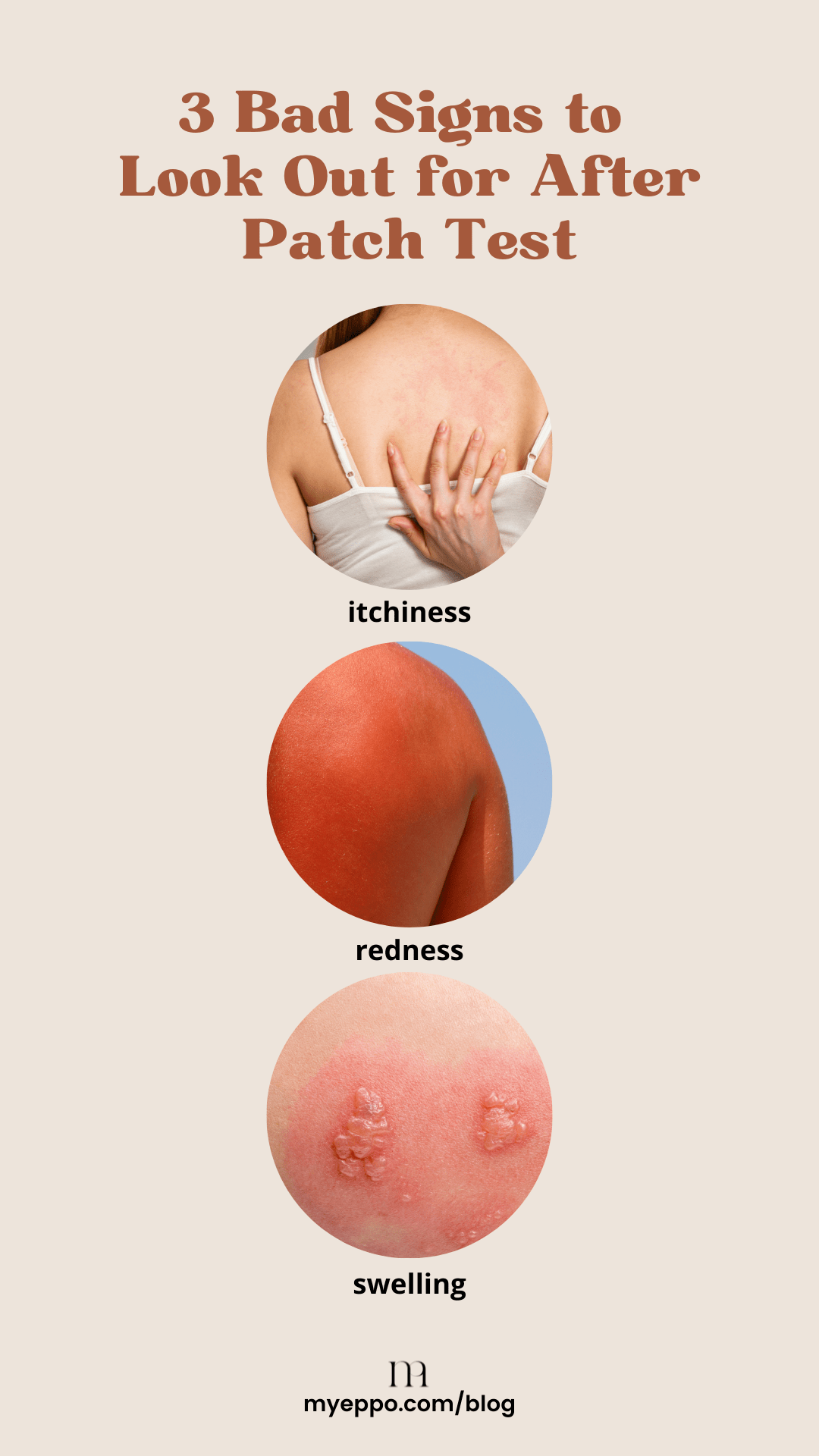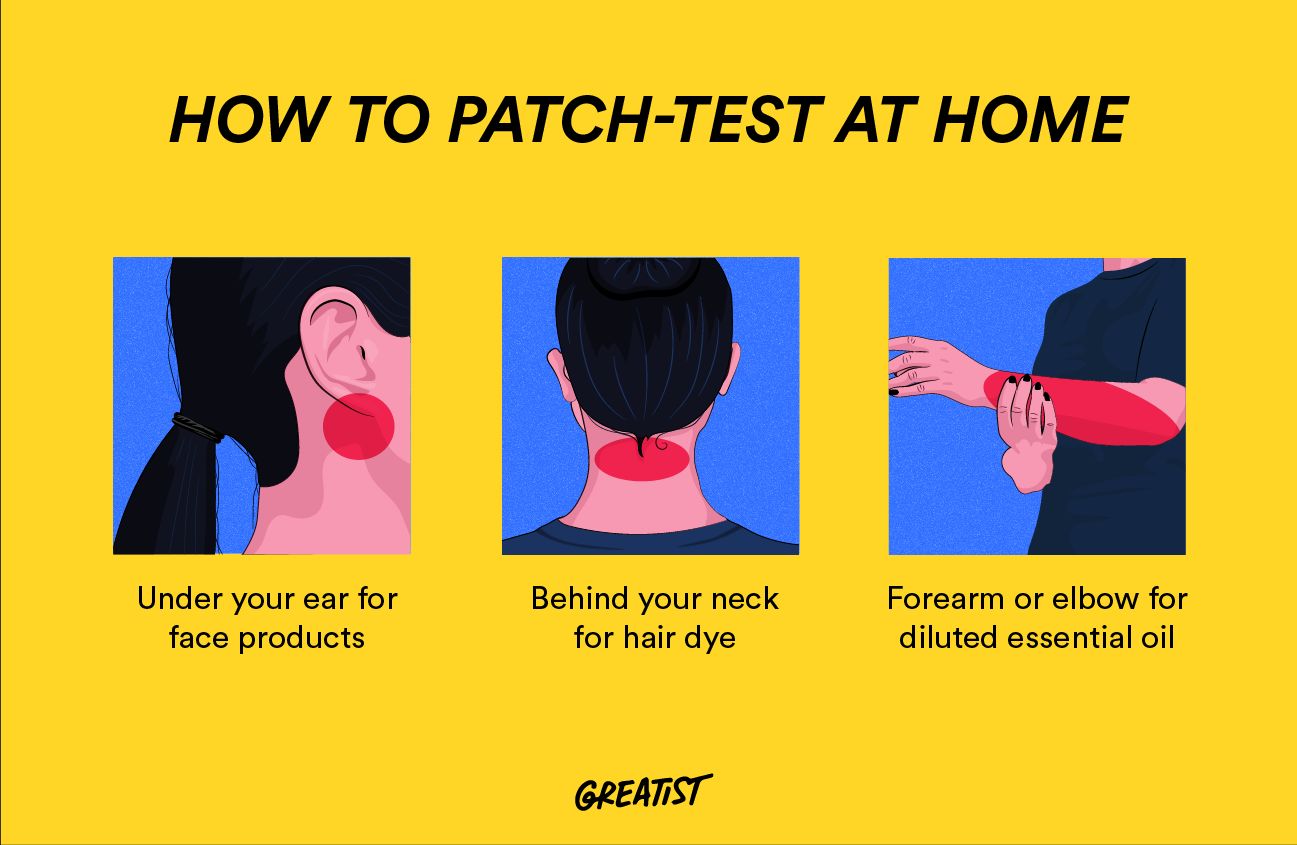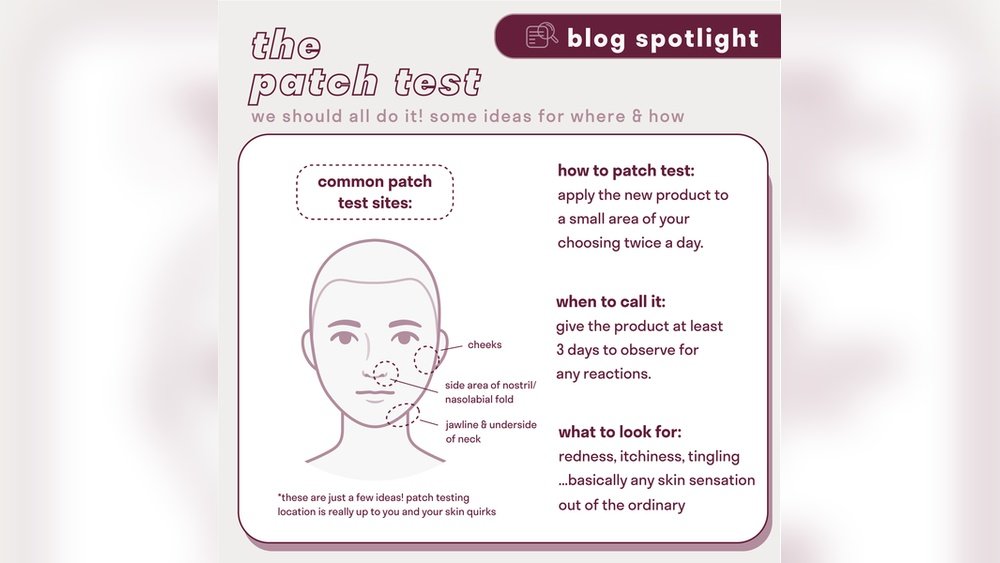Before you dive into a new skincare product, have you ever wondered if it’s truly safe for your skin? Trying something new can be exciting, but it also comes with risks—redness, itching, or even worse reactions.
The best way to protect your skin and avoid surprises is by patch testing. This simple step can save you from irritation and help you build a skincare routine that actually works for you. In this guide, you’ll discover the easiest and most effective way to patch test your skincare products at home.
Keep reading to learn how to do it right and keep your skin happy and healthy every step of the way.

Credit: myeppo.com
Choosing The Right Spot
Choosing the right spot for patch testing is crucial for accurate results. The area should show any reaction clearly without causing discomfort. It should also be easy to check regularly. Picking the correct location helps you spot irritation early. This step reduces the risk of applying harmful products all over your face or body.
Patch testing on the right skin patch gives you confidence in the product’s safety. It ensures you do not miss any allergic or adverse reactions. You can avoid unnecessary skin problems by testing in a proper place. Let’s explore the best locations for patch testing and areas to avoid.
Best Locations To Test
The inner forearm is a top choice for patch testing. This area has sensitive skin similar to the face. It is easy to see any redness or swelling here. Another great spot is behind the ear. This spot is discreet and less likely to be disturbed. Both places are ideal for observing reactions over 24 to 48 hours.
These areas are usually free from heavy sweat and dirt. This helps keep the test clean and accurate. They also allow you to apply a small amount of product without affecting daily activities. Choose a spot you can check often without hassle.
Avoiding Sun-exposed Areas
Sun-exposed skin can interfere with patch test results. Sunlight may cause skin irritation unrelated to the product. This can confuse your observations and give false reactions. Avoid testing on the face, neck, or hands. These areas get the most sun exposure daily.
Test in shaded or covered skin spots instead. This reduces the chance of sun damage affecting your patch test. Keeping the test area out of the sun ensures more reliable and clear results.

Credit: www.reddit.com
Applying The Product
Applying the product correctly during a patch test is key to seeing how your skin reacts. The goal is to use enough to cover the test area without overdoing it. This helps reveal any irritation or allergic reaction clearly. Below are important tips on how much product to use and how often to apply it during a patch test.
Amount To Use
Use a small, pea-sized amount of the skincare product. This amount covers the test spot well. Avoid using too much. Excess product can cause false irritation or hide mild reactions. A thin layer is enough to test how your skin responds.
Frequency Of Application
Apply the product once a day on the chosen test spot. Keep the product on for 24 hours unless you see any irritation. If the skin reacts, wash it off immediately. Repeat daily application for up to three days if no reaction occurs. This helps check for delayed skin sensitivity.
Monitoring Skin Reactions
Monitoring skin reactions is a key step in patch testing skincare products. It helps you spot any negative effects early. Careful observation ensures your skin stays safe from harm. This process involves checking the test area for specific signs of irritation. Knowing what to watch for can save your skin from damage.
Signs Of Irritation
Look for redness on the skin where you applied the product. It may appear as a pink or red patch. Notice any itching or a burning feeling. These are common signs of irritation. Swelling or raised bumps can also show a reaction. Blisters or peeling skin are more serious symptoms. Stop using the product if you see these signs.
Duration To Observe
Observe the test area for at least 24 to 48 hours. Some reactions appear quickly, within a few hours. Others may take a full day or two to show. Avoid washing or rubbing the area during this time. This helps you get a clear result. If no irritation occurs after 48 hours, the product is likely safe to use.

Credit: greatist.com
Handling Negative Responses
Handling negative responses during a skincare patch test is crucial for your skin’s health. Reactions like redness, itching, or swelling indicate your skin may not tolerate the product. Knowing how to respond calmly and correctly helps avoid further damage. Act fast and follow these guidelines to care for irritated skin and decide when to seek professional help.
Steps To Take If Irritated
Stop using the product immediately. Gently wash the area with lukewarm water and mild soap. Avoid scrubbing or using harsh cleansers. Pat the skin dry with a soft towel. Apply a cool compress to reduce swelling and soothe irritation. Use a fragrance-free moisturizer to protect the skin barrier. Avoid applying any other new products until your skin calms down. Monitor the area closely for changes or worsening symptoms over the next 24 to 48 hours.
When To Consult A Dermatologist
Seek medical advice if redness or swelling spreads beyond the test area. Intense itching, pain, or blistering also require professional care. If irritation does not improve after a few days, a dermatologist can identify the cause. They may perform specialized patch testing to find specific allergens. Early consultation helps prevent severe reactions and guides safe skincare choices. Never hesitate to ask for expert help when your skin reacts strongly.
Introducing New Products Safely
Introducing new skincare products safely is key to protecting your skin. Testing new items helps avoid unwanted reactions. Patch testing is a simple step to keep your skin calm and healthy. It lets you spot any irritation early.
One Product At A Time
Try only one new product at a time. This way, you can see how your skin reacts clearly. Applying multiple products at once can confuse the cause of any irritation. Give your skin a few days between testing different items. This careful approach helps you manage your skincare routine safely.
Understanding Active Ingredients
Know the active ingredients in your products. Ingredients like retinol or acids can cause mild irritation at first. This is normal but should improve with time. If irritation stays or worsens, stop using the product. Reading labels helps you avoid ingredients that may not suit your skin type.
Frequently Asked Questions
How To Properly Patch Test Skincare?
Apply a small amount on your inner forearm or behind the ear. Leave it for 24-48 hours. Watch for redness, itching, or swelling. If no reaction occurs, the product is safe to use. Wash off immediately if irritation appears. Introduce products one at a time.
Where Should I Patch Test Skincare Products?
Patch test skincare products on a small, discreet area like the inner forearm or behind the ear. Apply the product twice daily for seven days. Monitor for irritation such as redness, itching, or swelling before using it on your face or larger areas.
Where Is The Best Place To Patch Test New Skincare?
The best place to patch test new skincare is the inner forearm or behind the ear. Apply a small amount and monitor for irritation for 24-48 hours. Choose areas unlikely to be washed or rubbed to ensure accurate results.
How Long Should You Leave A Patch Test On For Skincare?
Leave a patch test on your skin for 24 to 48 hours. Check for redness, itching, or swelling before using the product regularly.
Conclusion
Patch testing helps keep your skin safe and healthy. Test new products on small skin areas first. Watch for any redness, itching, or swelling carefully. Avoid using several new products at once. This way, you find which product suits your skin best.
If irritation appears, stop using the product immediately. Gradually add new products after a successful test. Always take time to protect your skin from harm. Simple steps can prevent skin problems later. Stay patient and gentle with your skincare routine.
 Skip to content
Skip to content 